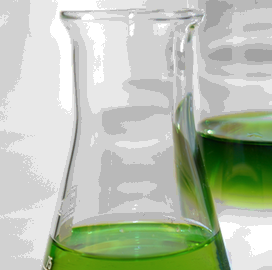Wastewater scraped for polymers
 Researchers at Aalborg University in Denmark have a new way to get valuable products from wastewater treatment plants.
Researchers at Aalborg University in Denmark have a new way to get valuable products from wastewater treatment plants.
Their development could enable the production of biopolymers, a sustainable alternative to oil-based products, while also extracting essential minerals like phosphorus.
The work is part of efforts to transform wastewater treatment into a circular, resource-generating process.
An ongoing project, led by Professor Per Halkjær Nielsen from Aalborg University's Department of Chemistry and Bioscience, presents a shift in how wastewater biomass is viewed.
Traditionally treated as waste, this biomass consists primarily of bacteria that consume organic material, resulting in purified water and bacterial residues.
“The perspective is enormous, because you’re taking something that is currently waste and making high-value products from it,” Professor Nielsen says.
Biopolymers, the core focus of the research, are naturally occurring long chains of molecules produced by living organisms, including bacteria.
In wastewater treatment, bacteria digest organic matter, leaving behind biomass rich in these biopolymers.
The REThiNk project is exploring how to extract these biopolymers, which can serve as substitutes for synthetic polymers currently derived from petroleum.
Biopolymers have wide-ranging applications in industries such as plastics, textiles, and adhesives.
They can also function as fire-retardant agents and flocculants, aiding in the purification of water bodies like harbours and lakes by clumping small particles together for easier removal.
If scaled up commercially, the process could address the growing demand for sustainable materials, particularly as many biopolymers are currently derived from seaweed harvested from vulnerable marine ecosystems.
The project also aims to optimise mineral recovery from wastewater, particularly phosphorus.
Phosphorus is vital for agricultural fertilisers and is listed by the EU as a “critical raw material” due to its potential scarcity.
Researchers envision global mapping of bacterial species in treatment plants to maximise biopolymer and mineral extraction.
“We can take 20-30 percent of the biomass and turn it into biopolymers that can replace petroleum products and even seaweed-derived materials,” according to Professor Nielsen.
The REThiNk project, conducted in collaboration with Delft University in the Netherlands and Aarhus University in Denmark, is targeting industrial scalability.
Results published in Current Opinion in Biotechnology suggest that wastewater treatment plants could evolve into centres for sustainable production, making use of the bacteria already present to manufacture new materials and recover valuable resources.








 Print
Print